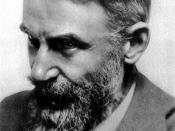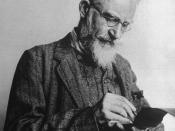The myth of "Pygmalion" and several other texts, including "Cinderella" and "Frankenstein" have been appropriated into different contexts in many forms of media including theatrical productions and films. Appropriations, such as the play, "Pygmalion", by George Bernard Shaw, Cinderella and Frankenstein has taken the context from the myths and transformed into the reflection of the society in the time of which they were composed.
Pygmalion was, in Greek legend, the King of Cyprus who fell in love with a beautiful ivory statue, Galatea. The more he looked upon her, the more deeply he fell in love with her, until he wished that she were more than a statue. Taking pity on him, the goddess; Aphrodite blew life into the statue and made it come alive as a beautiful woman. Shaw's parody is clear in the way he adapted this myth to his play in integrating the concept of a 'perfect state' for a female, and that Higgins was the creator.
The difference between the original Pygmalion and Shaw's play is that Pygmalion fell in love with his creation, whereas Higgins arrogantly desired admiration from his.
Cinderella on the other hand, was a tale of a happy female transformation, whereas in Pygmalion, Shaw was parodying romantic fiction and the unrealistic dreams of girls who hope to climb the social and economic ladder through marriage. Shaw also includes themes of class oppression and limited opportunities for women in male dominated societies. His humor and irony lie in the way he parodies this fairytale by giving it unlikely twists and turns. There are several parallels between the two texts, apart from concepts are obvious in characters, such as; Mrs. Higgins being the godmother and Freddy acting as Prince Charming.
Frankenstein is about a scientist obsessed with his...


